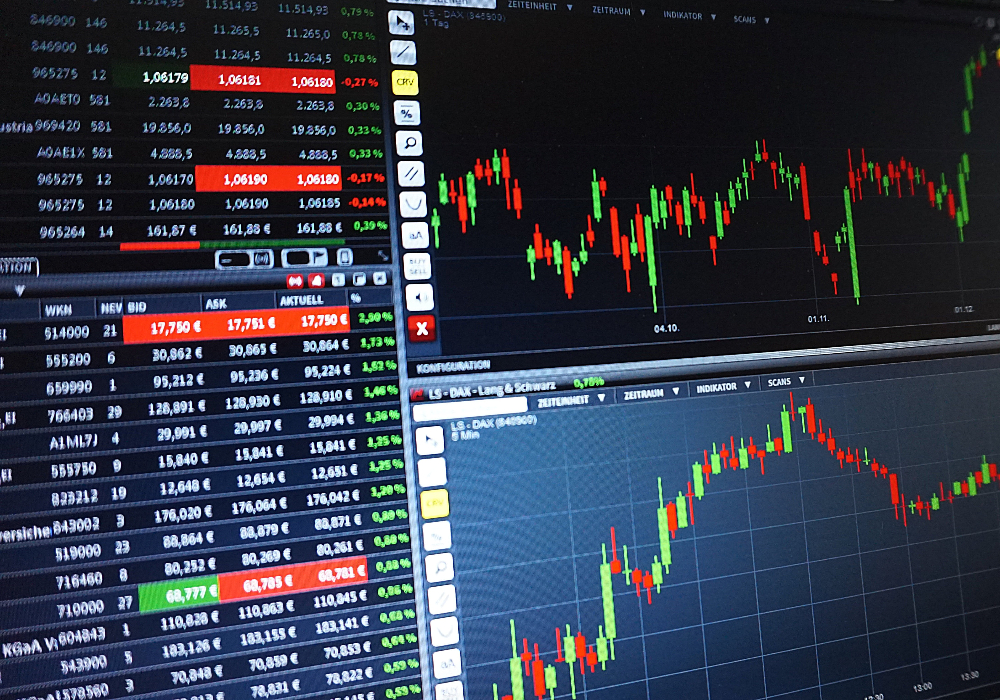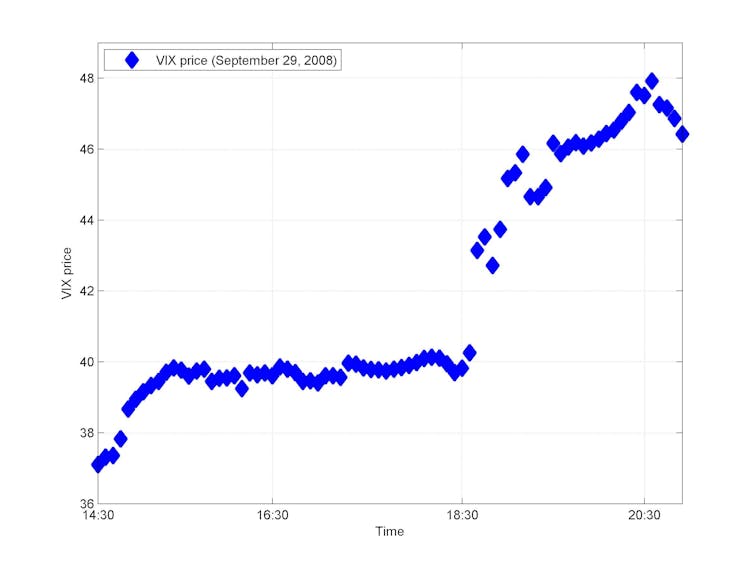Financial forecasting involves predicting an organization’s financial future. It typically considers a history of prices, trading volumes or other predictors such as financial statements, interest rates and commodity prices to predict what is called the target variable. Accurate forecasting can help companies to plan their supplies to meet customers’ demands, avoid losses and take on profitable investments.
When looking at predictors and target variables together, they are referred to as a time series, a sequence of data points collected over time. This data may be collected by companies, financial markets or government agencies on a regular basis ranging from daily, monthly, annually or, more frequently, on a one-minute or one-tenth-of-a-second basis. The speed at which the data is gathered is called sampling frequency.
Time series analysis is similar to weather forecasting — historical data is averaged to understand the past mechanisms of a certain phenomenon and to potentially predict its future behaviour.
Time series analysis is of enormous importance for investors, as financial success depends the ability to predict stock prices accurately.
Trading in financial markets
When stock prices are to a certain degree predictable, financial markets are inefficient in the sense that active portfolio investment is more profitable than passive investing in stock market indices such as the S&P 500 Index. However, the efficient market hypothesis argues that all available information is already reflected in market prices and so it is impossible to predict the future and beat the market by active investing.
Yet a large body of evidence suggests that financial markets are often inefficient and predictable.
Private information about a firm’s future (that other investors may not have) could be used for improved forecasting. But unlike in the movie Wall Street, not all private information is illegal, because it may arise from having superior forecasting technology or trading faster.
Oliver Stone directed the 1987 movie Wall Street, starring Michael Douglas, which looked at insider trading.
Automating trading
Advances in computing processing speeds and technology has given rise to high-frequency trading, an investing or trading activity with durations measured in fractions of a second. As the technology becomes more available and accessible, algorithmic trading is replacing floor trading by people. These days, 80 per cent of stock market transactions is performed by machines.
Technological superiority
Although some evidence suggests that high-frequency trading improves market efficiency and the speed of how fast everybody can execute large orders, it’s possible that rapid advances in technology benefit only those who become high-frequency traders.
High-frequency traders use their technological superiority to take advantage of the slower traders who do not have access to the technology needed to trade as quickly as they would like to. Such a critical view on high-frequency trading is prevalent in financial journalist Michael Lewis’s 2014 book Flash Boys: A Wall Street Revolt.
The technological advantages are also evident in the foreign exchange market. In a notable case of backlash, Electronic Broking Services (EBS), a major foreign exchange electronic trading platform, was forced to limit the influence of high-frequency (currency) traders.
Initially, in March 2011, EBS decided increase the trading speed and to adopt a fifth decimal place to the exchange rate quotes on their platform. In most cases, the exchange rate is quoted to four decimal places, for example USD/CAD $1.3289. Quoting exchange rates to five decimal places — for example USD/CAD 1.32891 — allows them to change at smaller amounts, increasing the sampling frequency and attracting high-frequency traders.
This caused the average daily cash volume on the platform to drop by 49 per cent from August 2011 to August 2012. This decline in trading activity was likely caused by the departure of traders and banks that used slower technology. The accelerated decline in the market share for EBS resulted in the policy being scrapped in September 2012.
Jump risks
In our paper, we explored the interactions between large price movements called jumps. Jumps can happen when there are large sudden discrepancies between market supply and demand, and the price needs to swiftly adjust to regain balance. Maintaining the optimal balance between demand and supply in a market is crucial for liquidity and price stability.
Illustration for a jump in the VIX index at around 18:40 GMT, when the U.S. House of Representatives voted against the bailout of Lehman Brothers on September 29, 2008 (five-minute intervals). D. Erdemlioglu, Author provided
We found evidence that jumps generated by low-frequency traders have no influence on high-frequency traders. Similarly, when we focus on high-frequency traders, we reveal that the jump risk originating from them has a limited impact on low-frequency traders.
Dangerous jumps
We also compared the two directions of volatility jump propagation for the Chicago Board Options Exchange Volatility Index (VIX). The VIX is an index providing theoretical 30-day market expectations based on the S&P 500 Index. Higher values of VIX indicate the risk that the market will make a large swing. Jumps in the VIX can be considered as extremely dangerous for the market participants’ investment positions.
In contrast to our previous findings, we found that extreme jumps made by low-frequency traders could be very dangerous to high-frequency traders, but the impacts of high-frequency traders on low-frequency traders are limited. Intuitively, low-frequency traders trade less often and over longer periods, and they order large trades that may create substantial shocks for high-frequency traders upon their execution.
These findings contribute to the ongoing debate on the role of high-frequency traders in financial markets, who are often criticized for their predatory behavior. However, we show that the trading activity of high-frequency traders in relation to extreme price movements is not harmful.
The policy implication of our work is that regulators should not exclusively view high-frequency traders as market destabilizers in their attempts to level the playing field for all investors.



 Reliance Industries Surges on Strong Quarterly Profit, Retail Recovery
Reliance Industries Surges on Strong Quarterly Profit, Retail Recovery  European Stocks Rally on Chinese Growth and Mining Merger Speculation
European Stocks Rally on Chinese Growth and Mining Merger Speculation  Apple Downgraded by Jefferies Amid Weak iPhone Sales and AI Concerns
Apple Downgraded by Jefferies Amid Weak iPhone Sales and AI Concerns  UK Markets Face Rising Volatility as Hedge Funds Target Pound and Gilts
UK Markets Face Rising Volatility as Hedge Funds Target Pound and Gilts  China’s Growth Faces Structural Challenges Amid Doubts Over Data
China’s Growth Faces Structural Challenges Amid Doubts Over Data  Elliott Investment Management Takes Significant Stake in BP to Push for Value Growth
Elliott Investment Management Takes Significant Stake in BP to Push for Value Growth  SoftBank Eyes Up to $25B OpenAI Investment Amid AI Boom
SoftBank Eyes Up to $25B OpenAI Investment Amid AI Boom  Insignia Financial Shares Hit 3-Year High Amid Bain and CC Capital Bidding War
Insignia Financial Shares Hit 3-Year High Amid Bain and CC Capital Bidding War  Mexico's Undervalued Equity Market Offers Long-Term Investment Potential
Mexico's Undervalued Equity Market Offers Long-Term Investment Potential  Why the Middle East is being left behind by global climate finance plans
Why the Middle East is being left behind by global climate finance plans  Home ownership is slipping out of reach. It’s time to rethink our fear of ‘forever renting’
Home ownership is slipping out of reach. It’s time to rethink our fear of ‘forever renting’  Tech Stocks Rally in Asia-Pacific as Dollar Remains Resilient
Tech Stocks Rally in Asia-Pacific as Dollar Remains Resilient  How the UK’s rollback of banking regulations could risk another financial crisis
How the UK’s rollback of banking regulations could risk another financial crisis  Investors Brace for Market Moves as Trump Begins Second Term
Investors Brace for Market Moves as Trump Begins Second Term  China's Refining Industry Faces Major Shakeup Amid Challenges
China's Refining Industry Faces Major Shakeup Amid Challenges  Tempus AI Stock Soars 18% After Pelosi's Investment Disclosure
Tempus AI Stock Soars 18% After Pelosi's Investment Disclosure  Do investment tax breaks work? A new study finds the evidence is ‘mixed at best’
Do investment tax breaks work? A new study finds the evidence is ‘mixed at best’ 






























